Russians love tea. Like . . . really love tea. Even the British and Irish look at the Russian love affair with tea and say, “Would you kindly tone it down?”
I learned of this secondhand when I was doing research a couple of years ago on tea grown in Russia. Not exactly sure how it happened, but Russians took a rather strong liking to low-altitude Ceylon. Brewed as a concentrate . . . from a giant brass water heater . . . that was stoked with a boot. Yes, a Samovar.
But in recent years, there’s been a shift in the Russian tea palate. One I learned of from – of all places – Instagram.
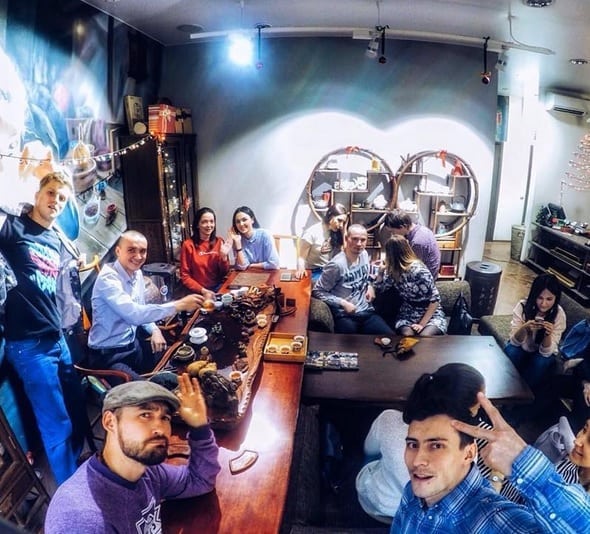
Young Russians love dark tea (or “heicha”). Like . . . really love dark tea. Puerh, to be precise.
Ornate teashops with wood-carved tasting stations and grandiose murals are – I guess? – becoming commonplace. And inside these ornately decorated shops? Walls lined with puerh cakes.
As I said, I didn’t know of this shift in the collective Russian palate until Instagram. And there were a lot of Russian puerh drinkers on Instagram. I’d say they account for half of my followers, which makes me wonder if I should heed my grandfather’s advice – he being a Russian history scholar – and learn Russian. Cyrillic letters still frighten me, though; makes me think I’m getting a computer virus.
But I digress . . . where was I? Oh yeah! Russian palate.
As with the predilection to burly, low-altitude Ceylon, it was only a matter of time before Russian tea growers tried to change with the times. As I’ve mentioned in prior writings, Russia has its own tea growing territory, that of the Dagomys region in Krasnodar krai. To the geographically declined, that’s near Sochi City . . . where the 2014 Winter Olympics were held.
The first well-known brand of Russian grown tea was Krasnodarskiy. I had the opportunity to try it, and it tasted like . . . low-grade Ceylon. I could see what they were aiming for. Since the Olympics, though, tea farms in the Dagomys region have upped their game considerably, focusing on developing specialty orthodox (but not Russian Orthodox) teas. Roughly a year ago, I tried several new green and black teas from the region, and they were unlike anything I’d ever tried before.
To the point where I got back in touch with my U.K. vendor contact who magically acquired them – What-Cha Tea. I was curious about narrowing my search to specific “estates” in the region, and owner Alistair Rea had procured several. A couple of months later, he sent out a box of stuff for me to sort through.
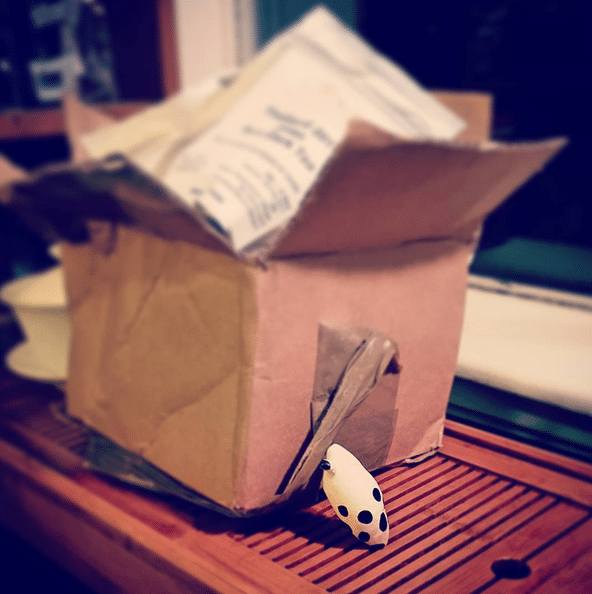
But there was one surprise he hadn’t told me about.
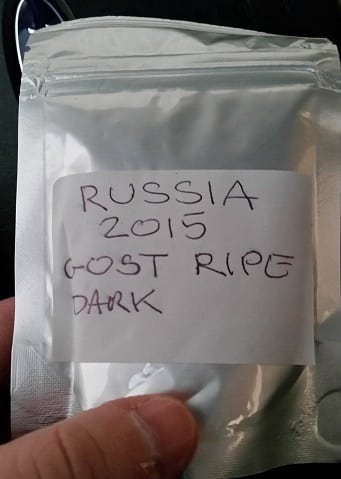
One of the packages contained Russian-grown ripe (or cooked) dark tea. I guess someone had their ear to the Russian millennial heartbeat. They loved puerh, now. Someone had to start producing a local alternative to meet some of the demand. This hailed from a company that called itself “Gost Tea”, which is Russian for . . . Ghost . . . Tea.
Okay, not that exciting a story. Apparently, they were a new outfit started in 2014. No information was given regarding where the tea leaves came from, or the processing method (save for that it was “cooked”), but from sight and smell alone, it was rather unusual.
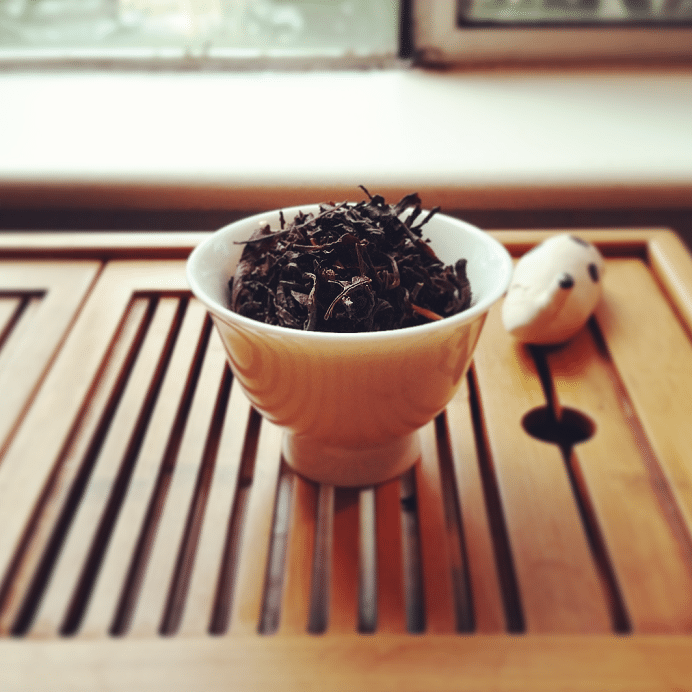
The first thing that struck me was how – yep – it looked like a cooked/ripe dark tea, alright. The leaves ranged from beige to ash black, like charcoal clippings. On first sniff, though, things got a little weird. Well, weirder. Instead of a bold, dusty (or fishy) aroma, I got a very . . . well . . . black tea aroma.
With all the new single garden outfits in the Dagomys region popping up, I think I have a bit of the terroir pinned down – raisins. Not sure why, but all the new black teas I’ve tried from Russia have a raisiny bend to them. There was some of that here, followed by the requisite dark tea earthiness.
For brewing, I chose to approach it like I would any heicha – a heaping teaspoon of leaves in a 6oz. gaiwan, three short steeps to start at around thirty-to-forty seconds each. Not exactly artistically gongfu-ish in approach, but not as liberal as Western brewing. In other words, perfect for a Russian tea.
Heh.
The first three infusions brewed to a deep copper, but not the usual tar blackness expected from a cooked puerh clone. The steam aroma also differed considerably, giving off a malty lean to the scent along with the earthy bend. On taste, the raisiny terroir showed up first. If I had tasted this blind, I would’ve thought I was sipping a standard (if strong) low-altitude Ceylon straight from a Samovar.
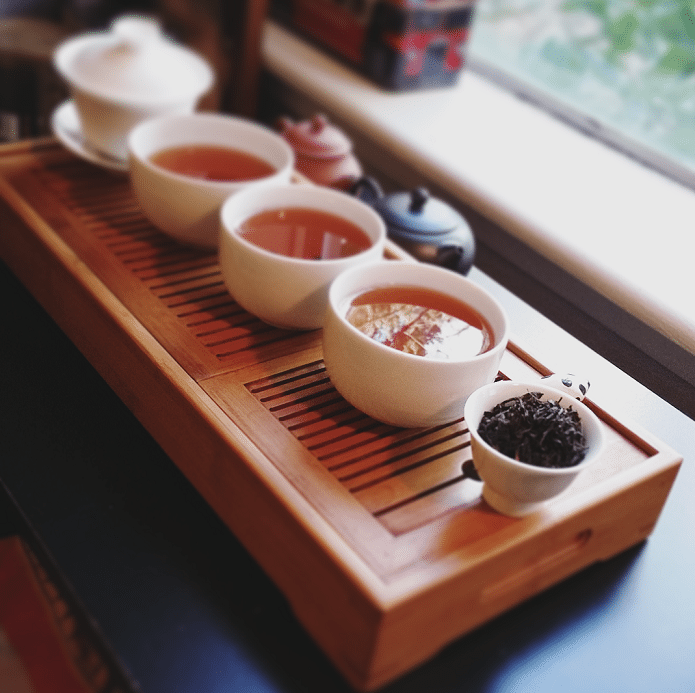
Where things got really interesting, though, was in the finish. After the malty, raisiny and floral notes subsided, it transitioned into something else. Whereas most black teas of varying make end on slight bitterness or dryness, this went a different route. The trailing taste was somehow . . . medicinal.
Puerh and heicha (dark tea) of a certain age or make often go from earthy to a fungal/medicinal flavor over time. It’s part of the aging process. There’s no other way to express what the flavor is other than to say it’s “essence of old”. Once an aged tea passes the ten-year mark, it’s really hard to pick up on nuance passed the “ancient” palatial experience. This dark tea, while still relatively young, had a bit of that going on in the lingering aftertaste. And that rules!
If I were a betting man (and I’m not), I’d guess they approached this a little differently from the standard cooked puerh or dark tea. Instead of using kill-greened maocha, I’d wager they used almost fully oxidized leaf. Then they wet-piled it. That would explain the black tea-ish character at the start of the sip.
Final thoughts? This was very much a bridge tea. A way of compromising between the old Russian palate and the new. Aspects of the burlier, Ceylon-leaning preference were there, coupled with the newer, earthier, puerh-like transition.
In short, it was very . . . Russian.
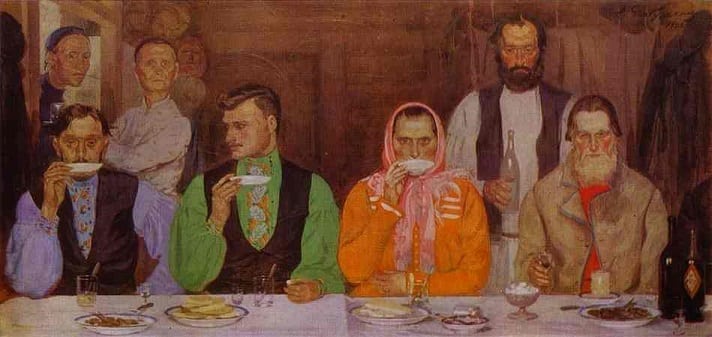
Leave a Reply